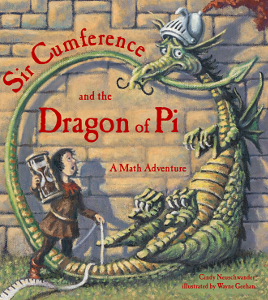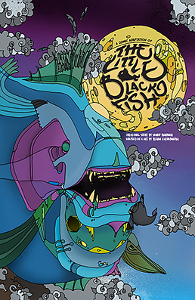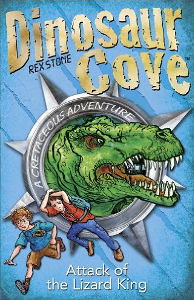 Series: Sir Cumference Series, #2
Series: Sir Cumference Series, #2
First Published: 1st February, 1999
Genre: Children’s Fantasy / Picture Book
Available: Amazon.com | Amazon UK | Charlesbridge
Radius accidently turns his father, Sir Cumference, into a dragon. As the other knights get ready to vanquish the dragon, Radius needs to solve a mathematical riddle to figure out how to de-dragon Sir Cumference.
This is part of a series of maths adventures, intended to introduce mathematical concepts to children. In this case, it’s all about pi (and dragons).
The book does a good job of making maths more interesting. Radius learns about circles and pi through practical things, such as seeing spokes on a wheel, decorating pies, and measuring round everyday objects. It makes it clear how pi is relevant to real things, as well as reinforcing what it is and how it’s calculated.
I appreciated the geometry puns (other characters include Lady Di of Ameter, and brothers Geo and Sym of Metry), though the medieval fantasy theme is the real lure for the target audience. It means the story can be fun for children who don’t really understand the maths. In terms of reading level, it requires being able to handle short paragraphs, though would also be a good one for adults to read aloud.
For those who do understand the maths, there are some problems they can solve themselves and a recap of what pi is at the end. My main issue with it is that pi as a decimal is only introduced as a very brief mention in the end summary. It’s described as three and about one seventh throughout the main story. This could create the impression that pi is exactly three and one seventh, as well as not being clear that the part after the decimal point continues on.
The artwork is an old-fashioned painting style. This works with the general medieval theme. There’s a little black cat in a lot of the images, which gives something else to find. It’s a decent book for introducing pi to young fantasy lovers. It can also be a bit of fun on pi day, as it ends with a pi celebration.
[A copy of this book was received from the publisher for review purposes]
 First Published: 1st September, 2011
First Published: 1st September, 2011 First Published: 9th February, 2016
First Published: 9th February, 2016 First Published: 15th March, 2016
First Published: 15th March, 2016 Series: Dinosaur Cove, #1 / Dinosaur Cove Cretaceous, #1
Series: Dinosaur Cove, #1 / Dinosaur Cove Cretaceous, #1